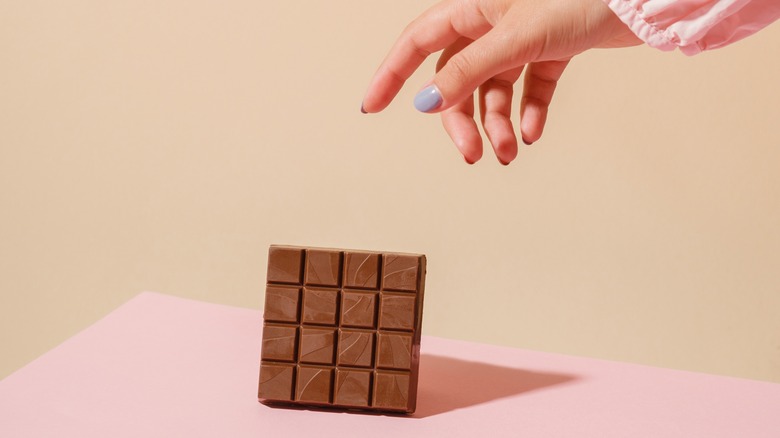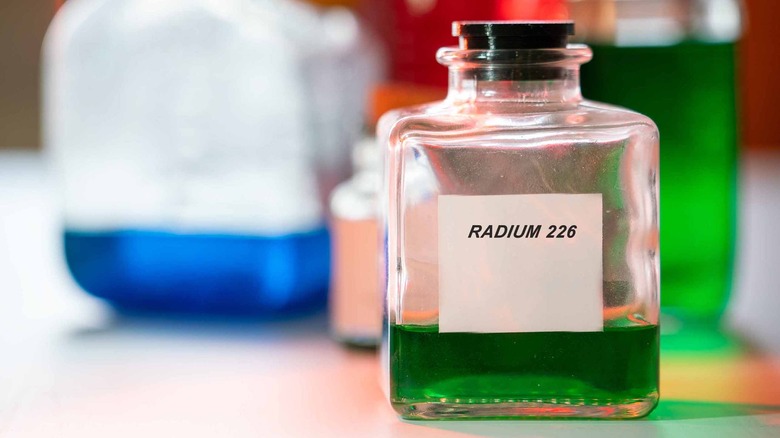The Radioactive Element That Was Historically Added To Chocolate
Earlier this year, when Gen Z foodies ushered in the renaissance of "Dirty Soda" (Sprite spiked with creamer and flavored syrups) via TikTok, it turned more than a few heads. Rainbow bagels and avocado toast have been the targets of similar criticism. (Typically comments to the effect of, "Hipsters, am I right?" accompanied by a theatrical eye roll.) But, take a moment to reflect on other weird food trends of history, and it gets even stranger.
According to the BBC, Victorian and Edwardian foodies of the late-1800s through the early-1900s were taking a walk on the wild side with their gastronomic inventions — and not always for the better. They infused loaves of bread with alum, a chalky aluminum-based compound commonly used today in laundry detergents. The idea was to make the bread whiter and denser, but it didn't function quite that way in execution. They also put boracic acid in their milk to "purify" it. Big mistake. Humans can't digest it, and it can even cause permanent organ damage. Some folks probably wouldn't even use it to clean their ovens. But, one of the most interesting and retrospectively horrifying food additives historically added to chocolate was — believe it or not — radioactive.
A little chocolate never hurt anyone (or, did it?)
Introducing: radium, a confectionary delicacy. (Yes, really.) Per the BBC, for Victorian households, radium was a commonplace ingredient in everything from cosmetics to condoms to cigarettes. Marie Curie discovered radium in 1898, for which she was awarded the Nobel Prize in Physics, says The Atlantic. According to the CDC, prolonged exposure to radium can be fatal — and, if it doesn't kill you, it can still cause such gnarly effects as bone cancer, anemia, cataracts, and fractured teeth.
But, while "radioactivity" might sound less than appetizing to the modern ear, Industrial-Revolution-era consumers couldn't get enough of it. By 1910, it was being produced synthetically by U.S. retailers. In the early 20th century, hundreds of "Radium Girls" staffed U.S. factories painting clocks and watch faces with glow-in-the-dark radium, via Britannica. The seeming novelty turned out to have devastating effects: While it made their clothing and teeth glow in the dark, which was a super impressive social flex, it also literally eroded their bones. Curie herself died from radiation exposure.
But, it didn't stop there. For a time, folks were actively eating radium in their chocolate. German confectioners Burk & Braun were cranking out "Radium Schokolade" chocolate bars advertised as a wonder product that would make consumers look younger, via Gizmodo. But, perhaps unsurprisingly, they were only on the market for five years, from 1931 to 1936, before consumers started noticing that they were not, in fact, looking any younger after all.

